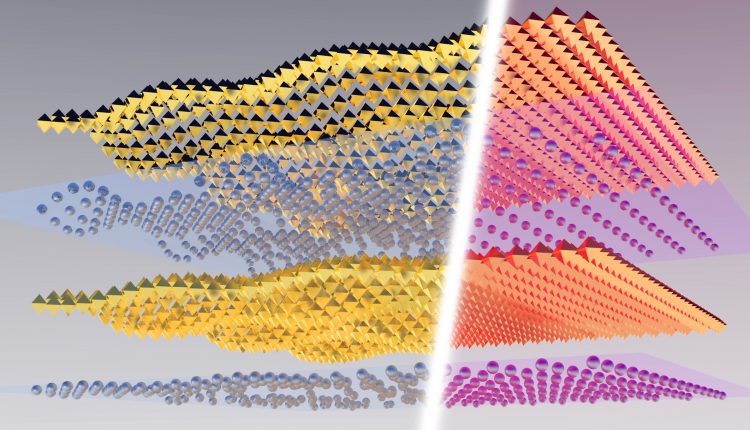ORNL Research Advances Perovskite Technology for High-Performance Solar Batteries – 3D Printing Industry
Researchers at Oak Ridge National Laboratory (ORNL) take a closer look at metal halide perovskites that, when combined with 3D printing, may enable a new generation of high-performance solar batteries.
Metal halide perovskite materials have gained prominence over the past decade for their ability to convert sunlight into electrical energy, a process known as photovoltaic conversion.
Unlike many before it, the new study uses advanced equipment at ORNL’s Center for Nanophase Materials Science (CNMS) to probe the structure of metal halide perovskites. Crucially, the research is also studying how this structure interacts with phenomena such as ions in motion to actually generate electrical energy from light.
The team believes their work could enable the design of more efficient and robust solar cell batteries and other photovoltaic devices, including 3D printed ones.
“These materials were mostly studied under static conditions,” explains Yongtao Liu, lead author of the study. “We studied the materials in real time to understand variables such as the movement of the ions. Otherwise you don’t get a complete picture. Our results suggest that these ion migration patterns are key to solar energy-to-electricity conversion efficiency and solar cell stability.”
An illustration of lattice distortion, strain, and ion distribution in metal halide perovskites. Image via ORNL.
Metal Halide Perovskites
Metal Halide Perovskites are a class of crystalline metals known for their ability to harness light energy and generate electrical energy. Naturally, as demand for renewable energy increased at an unprecedented rate, perovskites became a hot topic in solar cell research.
But what makes metal halide perovskites unique? According to Olga Ovchinnikova, a co-author of the study, over the past 40 years, standard solar cells based on multicrystalline silicon have only achieved a peak efficiency of around 23%. On the other hand, metal halide perovskites have already shown higher conversion efficiencies in the last decade alone.
Metal halide perovskites not only capture light more efficiently, but are also lighter, more flexible, and less expensive than silicon. As such, they can be easily fabricated into thin films that can be adhered to virtually any surface.
Ovchinnikova also believes that perovskites can go hand-in-hand with 3D printing to create an unlimited number of functional solar-powered devices. She said: “We can use 3D printing to make wearables, put them on cars and really democratize the use of perovskite solar cells. You could put them anywhere.”
A perovskite solar cell. Photo via Solliance.
Working toward longer-lived perovskites
One of the main reasons perovskites hold back is their low durability compared to silicon – they work well but degrade over time and lose efficiency. To make perovskites last longer, the ORNL team reiterates that it is important to understand the properties that enable their exceptional performance in the first place.
To conduct such a groundbreaking and comprehensive study, the team had to develop a suite of new methods to characterize everything from the chemical properties to the physical properties of the materials. Equipment like mass spectrometers and scanning probe microscopes weren’t enough, so researchers looked to the capabilities of ORNL’s CNMS.
“A mass spectrometer doesn’t show us how the ions move,” explains Ovchinnikova. “We therefore used a new type of instrument that combines a mass spectrometer and a scanning probe microscope in one system. We also developed an approach to this system that allows us to see the movement of the ions as the material interacts with light in real-time, and integrated new machine learning methods to process the collected data and predict this behavior simulate.”
After discovering that the behavior of perovskites is actually determined by complex collections of properties working together, the team has now filed patents for the methods they have developed. Future work will include using the techniques to develop more durable perovskites for solar cells, as well as applying them to other classes of materials to understand their properties as well.
“Now that we better understand some of the basic physics, we’re investigating how we can design and improve the materials to enhance their photovoltaic effects,” Ovchinnikova said. “We can think about the next level.”
Further details of the study can be found in the publication entitled “Ferroic Halide Perovskite Optoelectronics”.
Oak Ridge National Laboratory. Photo via ORNL.
ORNL, which reports to the US Department of Energy, is home to all kinds of technological advances, including those related to additive manufacturing. Just recently, ORNL researchers announced the development of a novel water-soluble plastic binder that can be added to 3D printed materials and injected into parts with “extraordinary strength.” By optimizing a low molecular weight polyethylenimine (PEI) with a high amine content, the ORNL team was able to tailor its properties to double its strength compared to traditional binders.
ORNL also recently patented a novel cable-driven construction method that allows entire buildings to be 3D printed via a suspension system. Called Sky Big Area Additive Manufacturing, or “SkyBAAM” for short, the technology is designed to operate with cords attached to cord wraps that allow the user complete spatial control over the nozzle’s movements. The patent has since been challenged by two of the industry’s leading proponents of open source 3D printing – Dr. Adrian Bowyer and Joshua Pearce.
Subscribe to the 3D printing industry newsletter to get the latest news in additive manufacturing. You can also stay connected by following us on Twitter, liking us on Facebook and visiting the 3D Printing Industry YouTube channel.
Looking for a career in additive manufacturing? Visit 3D Printing Jobs for a selection of roles in the industry.
The selected image shows a plot of lattice distortion, strain, and ion distribution in metal halide perovskites. Image via ORNL.



Comments are closed.